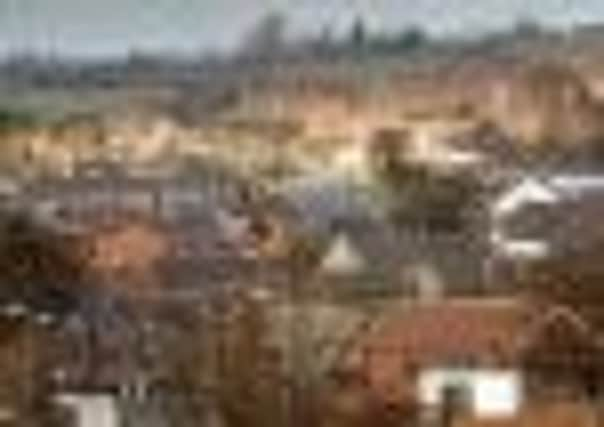Jobs fears cloud the future for former pit heartlands


The author’s descriptions of the pits, hulking steelworks and overcrowded slums around Barnsley and Sheffield in his book The Road to Wigan Pier sent a shiver down the spine of the more prosperous South – a world away from the dirt and misery of the scenes he saw.
He recorded fetid alleyways and poisoned rivers, malnourished families crowded into rotting houses and the thick black smog suffocating all signs of life.
Advertisement
Hide AdAdvertisement
Hide AdNow the slums have been cleared and factories closed and grass has sprouted up on the monstrous slag heaps where Orwell predicted it would never grow.
But the transition has not been so seamless for many of the inhabitants he described. The widespread closure of industry has devastated the area and caused chronic unemployment which now runs down through several generations.
And the modern-day afflictions of drugs, crime and anti-social behaviour are proving difficult for communities to shake off.
New figures released last month show 35 per cent of unemployed claimants in Barnsley are aged between 18 and 24 – the highest in Yorkshire – followed closely by Sheffield at 30.6 per cent.
Advertisement
Hide AdAdvertisement
Hide AdResidents in the pit village of Grimethorpe, near Barnsley, have witnessed a modern-day dystopia that even the author of 1984 could not imagine. And with the cuts biting and jobs scarce, many fear it could return.
The vicar at St Luke’s Church, the Rev Peter Needham, said: “When I arrived in Grimethorpe in 2002 it was a terrible state.
“When they took the mines away in 1993 there were no regeneration plans. Ambulances wouldn’t even go to parts of the village without a police escort. My predecessor was mugged twice and beaten around the head.
“It was terrible. On a Sunday the front door of the church was never opened because people got shot at with air rifles from the flats opposite – we had to use a back door. All the windows in the church were smashed in.
“There were tribes of addicts roaming about.
Advertisement
Hide AdAdvertisement
Hide Ad“But somehow through these dark times the village kept its great sense of pride and community that is sadly now beginning to wane. The regeneration started in 2005, but now things are starting to go down again. I’m worried about what will happen.”
The licensee of the Red Rum pub, Ken Hancock, who grew up in the village and worked in the pit for 25 years, is equally concerned.
He said: “Your options now are very limited and for a lot of people they just cannot get to the jobs.
“It is a massive change from 10 years ago when Grimethorpe felt like a dumping ground.
Advertisement
Hide AdAdvertisement
Hide Ad“Now there is new housing and new social housing instead of the slums from before.
“The problem is there is not the jobs to go with these new homes. If you cannot get a job up to 23, you start to feel, what is the point?”
Sheffield, Orwell wrote in 1936, “could justly claim to be the ugliest town in the old world”. Some of its inhabitants have equally unfavourable things to say about the author.
I met Ken Curran on the infamous Manor estate – overlooking the Don Valley described in The Road to Wigan Pier and, 15 years ago, shamed as the worst estate in Britain. The claim sparked the birth of the Manor and Castle Development Trust, chaired by Mr Curran.
Advertisement
Hide AdAdvertisement
Hide AdNowadays the estate is transformed, with new houses, community buildings and a park. But shops are still boarded up and on a Friday afternoon, betting shops, as Orwell noted, still full.
“I only partially identify with the Sheffield that Orwell describes,” Mr Curran said. “He had no real experience of the industrial revolution in the North.
“We are still struggling to shake off the reputation, but there is hope here now. There are still problems with drugs and anti-social behaviour, but we are not the worst place in Sheffield any more, let alone the country.”